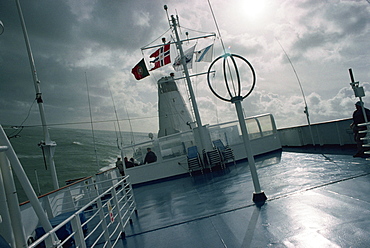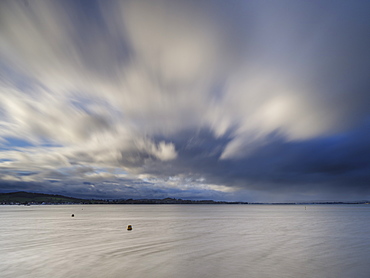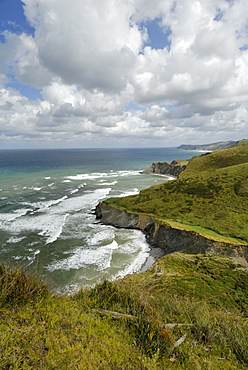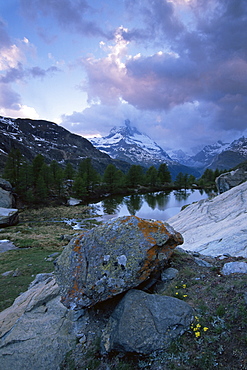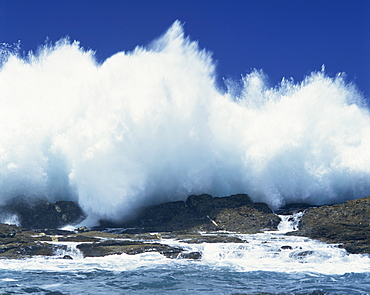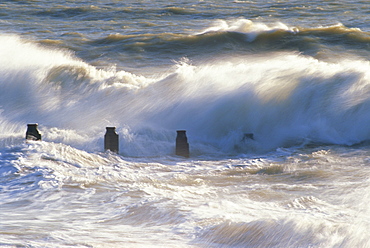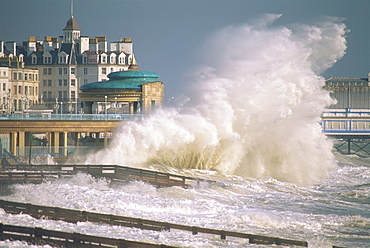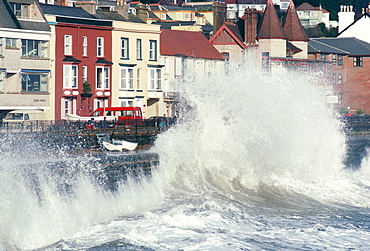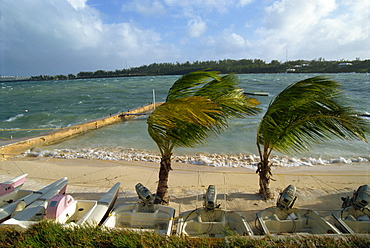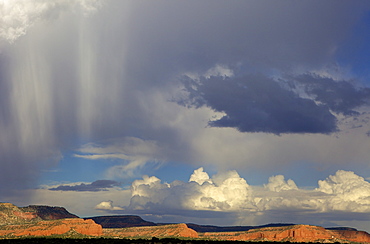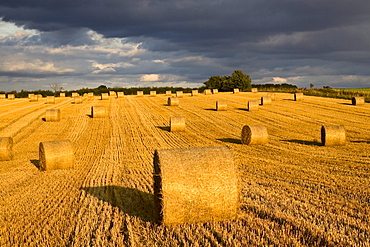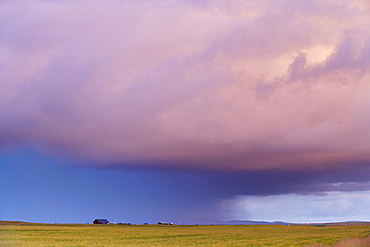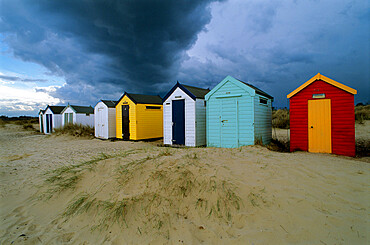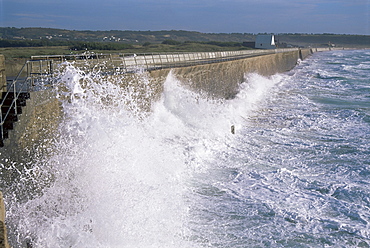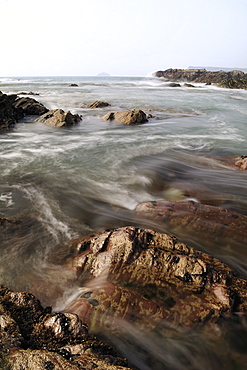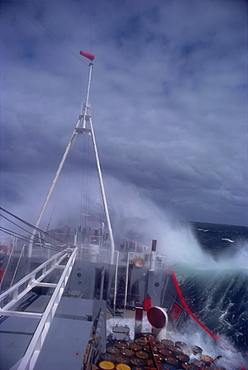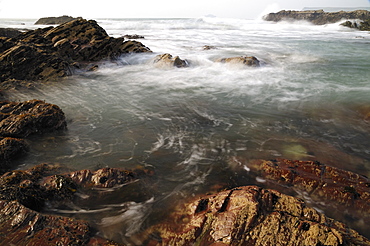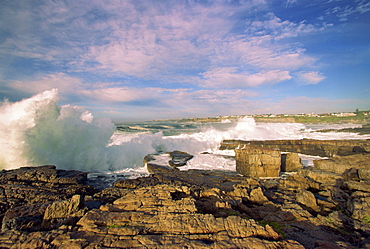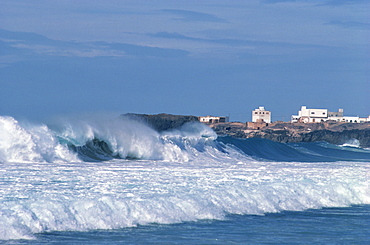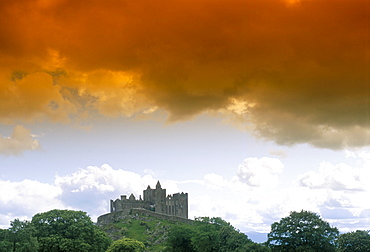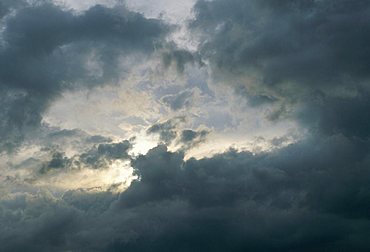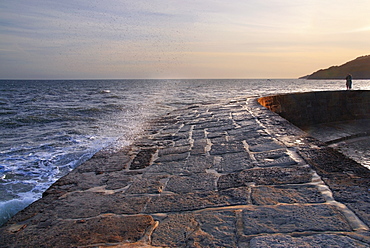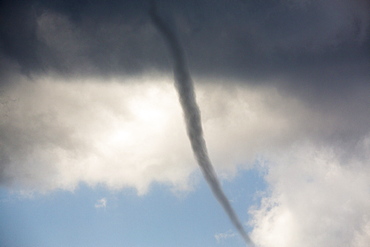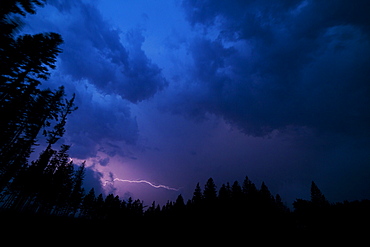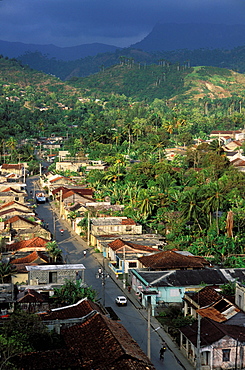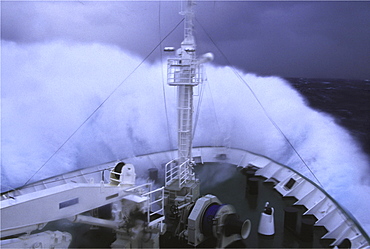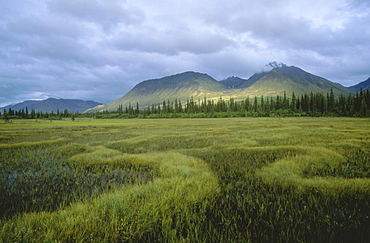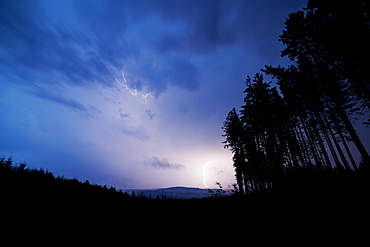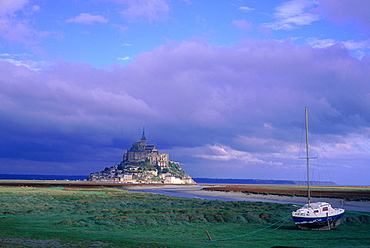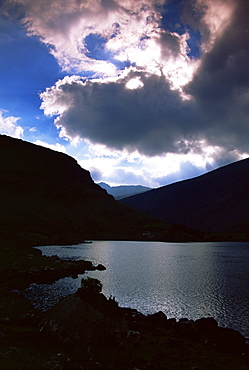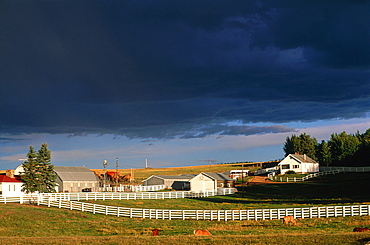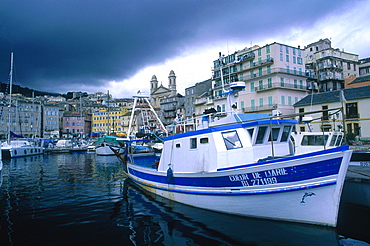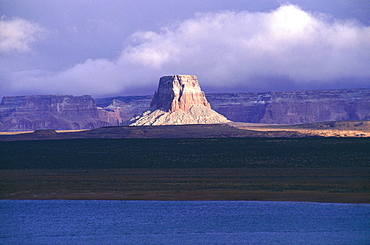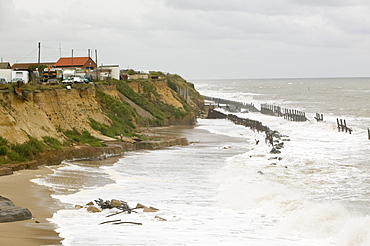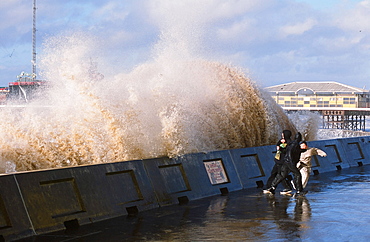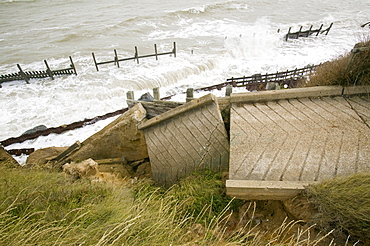Results
« Previous 1 2 3 4
336 results found
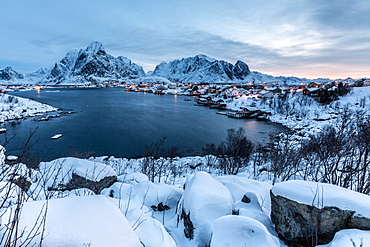
Stormy clouds over the Bay of Hamnoy famous for its dried codfish and for typical houses, called rorbu, Hamnoy, Lofoten Islands, Arctic, Norway, Scandinavia, Europe
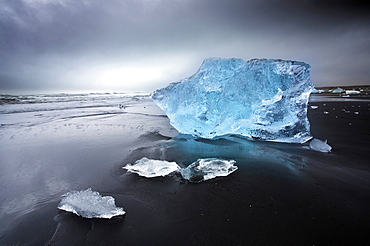
Jokulsa Beach on a stormy day, where icebergs from nearby Jokulsarlon glacial lagoon flow into the North Atlantic and are then washed back onto the black volcanic sand beach, on the edge of the Vatnajokull National Park, South Iceland, Iceland, Polar Regions
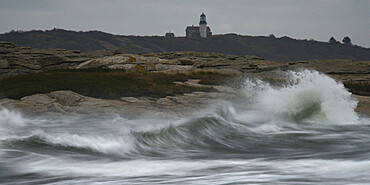
Pond Island Lighthouse in front of stormy ocean, Maine, New England, United States of America, North America
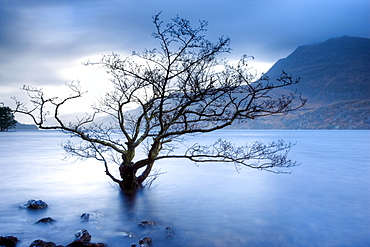
Partially submerged tree in Loch Maree on a stormy day, near Poolewe, Achnasheen, Wester Ross, Highlands, Scotland, United Kingdom, Europe
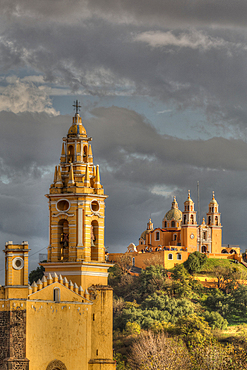
Stormy Weather, Convent of San Gabriel Arcangel in the foreground, Church de Nuestra Senora de los Remedios in the background, Cholula, Puebla State, Mexico, North America
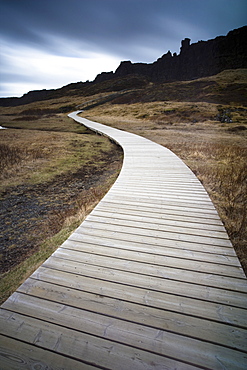
Boardwalk meandering towards rugged cliffs and stormy sky at Thingvellir National Park near Reykjavik, Iceland, Polar Regions
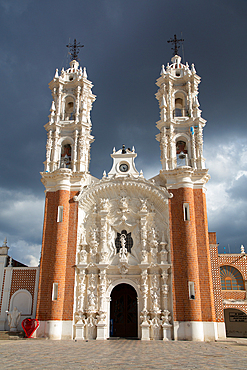
Stormy Weather in the background, Basilica of Our Lady of Ocotlan, Tlaxcala City, Tlaxcal Stae, Mexico, North America

Stormy evening view along coastline near Carloway, Isle of Lewis, Outer Hebrides, Scotland, United Kingdom, Europe

Straight rural dirt road through farmland near Le Mans, overcast stormy sky, Sarthe in Loire, Centre, France, Europe
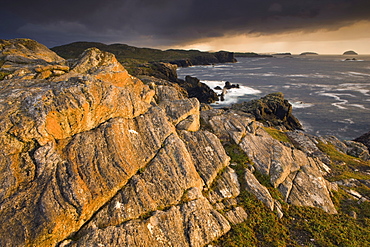
Stormy evening view along the rugged Atlantic coast near Carloway, Isle of Lewis, Outer Hebrides, Scotland, United Kingdom, Europe

Overcast sky and rural road through fields in agricultural landscape near Entrepagny, Normandy Vexin, Basse Normandie (Normandy), France, Europe
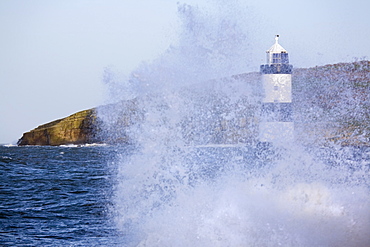
Penmon Point Lighthouse, built in 1838 at the northern entrance to the Menai Strait, and Puffin Island, with rough sea at high tide in winter, Penmon, Anglesey, Wales, United Kingdom, Europe
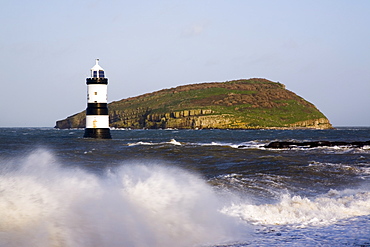
Penmon Point Lighthouse, built in 1838 at the northern entrance to the Menai Strait, and Puffin Island, with rough sea at high tide in winter, Penmon, Anglesey, Wales, United Kingdom, Europe

The Lindblad Expeditions ship National Geographic Explorer in heavy seas in the Drake Passage, Antarctica, Polar Regions
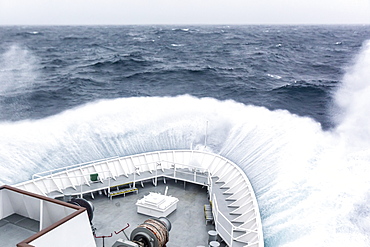
The Lindblad Expeditions ship National Geographic Explorer in heavy seas in the Drake Passage, Antarctica, Polar Regions
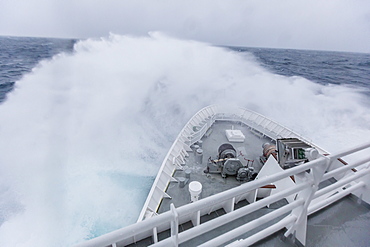
The Lindblad Expeditions ship National Geographic Explorer in heavy seas in the Drake Passage, Antarctica, Polar Regions
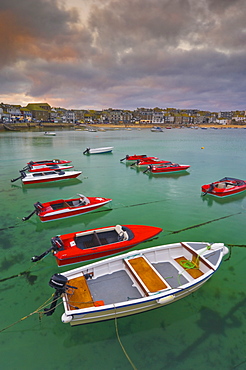
Strange cloud formation in a stormy sky at sunset, with small red speedboats for hire with an incoming tide in the harbour at St. Ives, Cornwall, England, United Kingdom, Europe
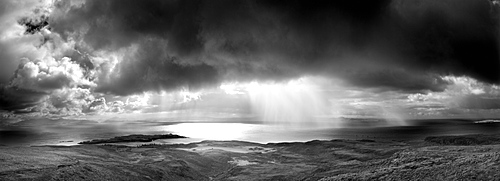
Panoramic view from An Sgurr on the Isle of Eigg, looking towards a storm over the sea between Eigg and the mainland, Highland, Scotland, United Kingdom, Europe

Stormchasers and TV channel nine reporting truck at scene of supercell thunderstorm near Sterling, Oklahoma, United States of America, North America

Quiver trees (kokerboom) and boulders against a fiery and stormy sky in the Giant's Playground, Keetmanshoop, Namibia, Africa

Buelna beach and karst limestone El Picon rock pillar at high tide on a windy day, near Llanes, Asturias, Spain, Europe
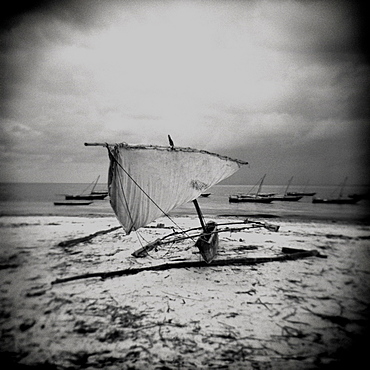
Image taken with a Holga medium format 120 film toy camera of dhow on beach in stormy weather, Nungwi, Zanzibar, Tanzania, East Africa, Africa
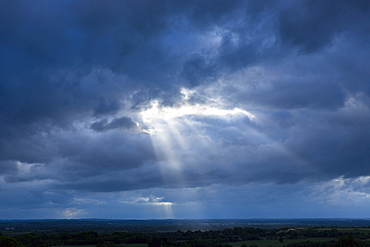
Rays of the sun break through cloudy stormy sky in inclement weather, England, United Kingdom, Europe
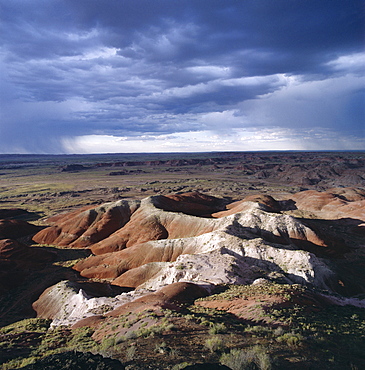
Eroded rocks under an overcast stormy sky, the Painted Desert, Arizona, United States of America (USA), North America
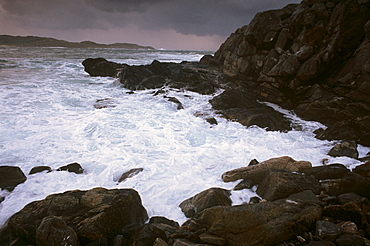
Butt of Lewis (Rubha Robhanais) rocky coast, northern tip of Lewis, Lewis, Outer Hebrides, Scotland, United Kingdom, Europe

Break over Sound of Taransay, near Borve, South Harris, Outer Hebrides, Scotland, United Kingdom, Europe
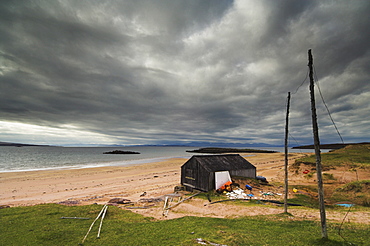
Stormy sky with fisherman's hut and net drying poles, Redpoint beach, Wester Ross, Scotland, United Kingdom, Europe
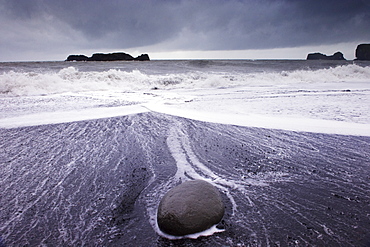
Rough sea on Reynisfjara black sand beach, near Vik, in the south of Iceland (Sudurland), Polar Regions
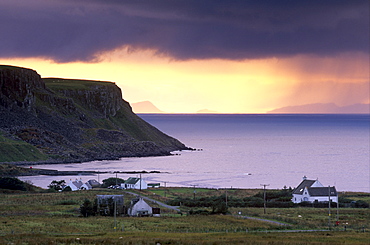
Sunset and stormy weather near Bornesketaig, Trotternish, Isle of Skye, Inner Hebrides, Scotland, United Kingdom, Europe
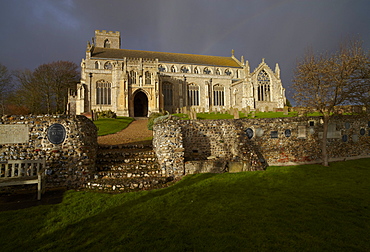
Storm clouds over St. Margarets Church at Cley next the Sea, Norfolk, England, United Kingdom, Europe
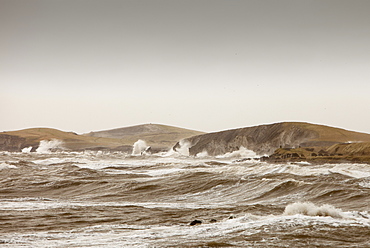
Gale force winds and crashing waves battering the coastal defences in Harrington, Workington, Cumbria, England, United Kingdom, Europe
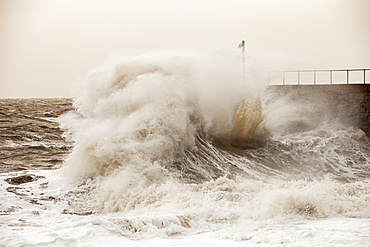
Gale force winds and crashing waves battering the coastal defences in Harrington, Workington, Cumbria, England, United Kingdom, Europe
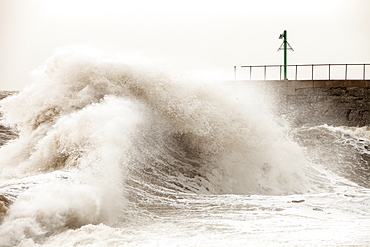
Gale force winds and crashing waves battering the coastal defences in Harrington, Workington, Cumbria, England, United Kingdom, Europe
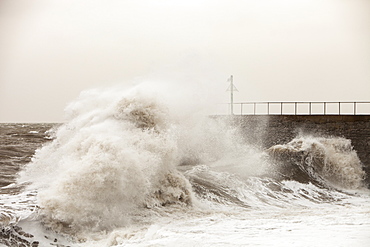
Gale force winds and crashing waves battering the coastal defences in Harrington, Workington, Cumbria, England, United Kingdom, Europe

Twenty Fenchurch Street, The Leadenhall building and the Swiss Re Tower in the City of London from the South bank of the River Thames, UK.
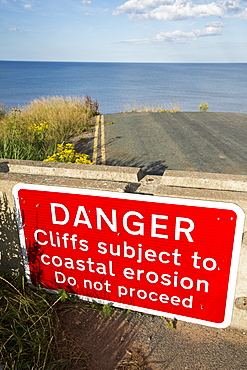
A collapsed coastal road near Skipsea on Yorkshires East Coast, UK. The coast is composed of soft boulder clays, very vulnerable to coastal erosion. This sectiion of coast has been eroding since Roman times, with many villages having disappeared into the sea, and is the fastest eroding coast in Europe. Climate change is speeding up the erosion, with sea level rise, increased stormy weather and increased heavy rainfall events, all playing their part.
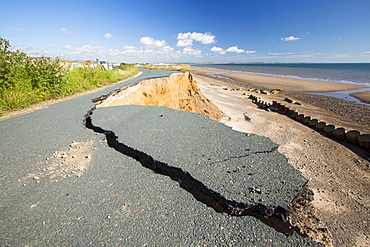
A collapsed coastal road at between Skipsea and Ulrome on Yorkshires East Coast, near Skipsea, UK. The coast is composed of soft boulder clays, very vulnerable to coastal erosion. This sectiion of coast has been eroding since Roman times, with many villages having disappeared into the sea, and is the fastest eroding coast in Europe. Climate change is speeding up the erosion, with sea level rise, increased stormy weather and increased heavy rainfall events, all palying their part.
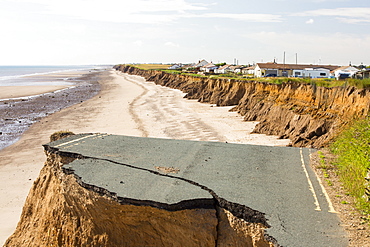
A collapsed coastal road at between Skipsea and Ulrome on Yorkshires East Coast, near Skipsea, UK. The coast is composed of soft boulder clays, very vulnerable to coastal erosion. This sectiion of coast has been eroding since Roman times, with many villages having disappeared into the sea, and is the fastest eroding coast in Europe. Climate change is speeding up the erosion, with sea level rise, increased stormy weather and increased heavy rainfall events, all palying their part.
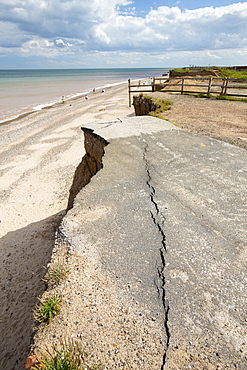
A collapsed coastal road at Easingotn on Yorkshires East Coast, near Skipsea, UK. The coast is composed of soft boulder clays, very vulnerable to coastal erosion. This sectiion of coast has been eroding since Roman times, with many villages having disappeared into the sea, and is the fastest eroding coast in Europe. Climate change is speeding up the erosion, with sea level rise, increased stormy weather and increased heavy rainfall events, all palying their part.
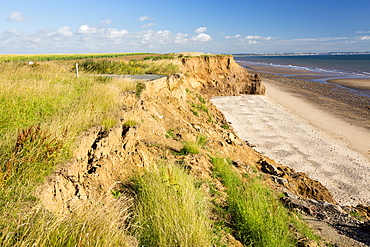
A collapsed coastal road at near Aldbrough on Yorkshires East Coast, near Skipsea, UK. The coast is composed of soft boulder clays, very vulnerable to coastal erosion. This sectiion of coast has been eroding since Roman times, with many villages having disappeared into the sea, and is the fastest eroding coast in Europe. Climate change is speeding up the erosion, with sea level rise, increased stormy weather and increased heavy rainfall events, all palying their part.
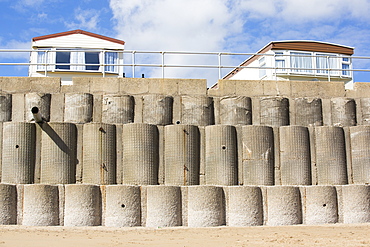
Concrete sea defences at Beach Bank Caravan Park in Ulrome near Skipsea on Yorkshires East Coast, UK. The coast is composed of soft boulder clays, very vulnerable to coastal erosion. This section of coast has been eroding since Roman times, with many villages having disappeared into the sea, and is the fastest eroding coast in Europe. Climate change is speeding up the erosion, with sea level rise, increased stormy weather and increased heavy rainfall events, all playing their part.
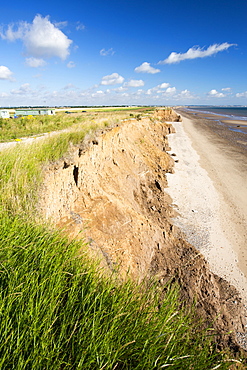
A collapsed coastal road at between Skipsea and Ulrome on Yorkshires East Coast, near Skipsea, UK. The coast is composed of soft boulder clays, very vulnerable to coastal erosion. This sectiion of coast has been eroding since Roman times, with many villages having disappeared into the sea, and is the fastest eroding coast in Europe. Climate change is speeding up the erosion, with sea level rise, increased stormy weather and increased heavy rainfall events, all palying their part.
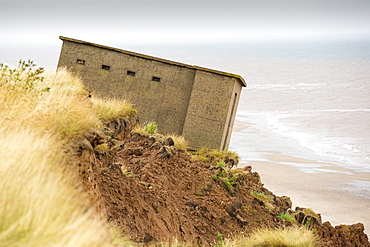
A Second world War lookout post leaning alarmingly and about to tumble over the edge of the cliff near Aldbrough on Yorkshires East Coast, UK. The coast is composed of soft boulder clays, very vulnerable to coastal erosion. This section of coast has been eroding since Roman times, with many villages having disappeared into the sea, and is the fastest eroding coast in Europe. Climate change is speeding up the erosion, with sea level rise, increased stormy weather and increased heavy rainfall events, all playing their part.
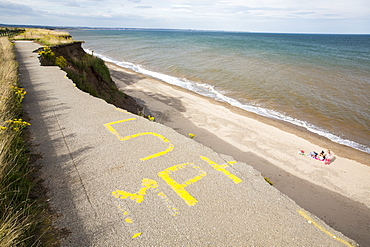
A collapsed coastal road at Barmston on Yorkshires East Coast, near Skipsea, UK. The coast is composed of soft boulder clays, very vulnerable to coastal erosion. This sectiion of coast has been eroding since Roman times, with many villages having disappeared into the sea, and is the fastest eroding coast in Europe. Climate change is speeding up the erosion, with sea level rise, increased stormy weather and increased heavy rainfall events, all palying their part.

The Thames barrier on the River Thames in London. It was constructed to protect the capital city from storm surge flooding. Recent predictions show it will probably be redundant in around twenty years due to increased stormy weather and sea level rise driven by climate change.

The Thames barrier on the River Thames in London. It was constructed to protect the capital city from storm surge flooding. Recent predictions show it will probably be redundant in around twenty years due to increased stormy weather and sea level rise driven by climate change.

The Thames barrier on the River Thames in London. It was constructed to protect the capital city from storm surge flooding. Recent predictions show it will probably be redundant in around twenty years due to increased stormy weather and sea level rise driven by climate change.
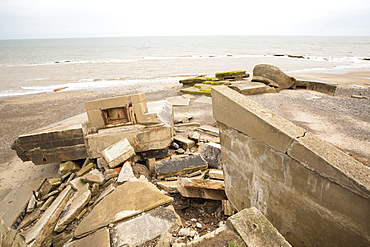
The Remains of the Godwin battery on the beach at Kilnsea at the head of Spurn point on Yorkshires East Coast, UK. Initially constructed during the First World War, the Godwin Battery was added to during the Second World War. It comprised of gun emplacements, search light, barracks, officers’ mess, and a hospital. This section of coastline is the fastest eroding coastline in Europe. The soft boulder clay cliffs are easily eroded and have been eroding since Roman Times, but recently the climate change impacts of increased stormy weather, increased heavy rainfall events and sea level rise have accelerated the rate of erosion. The average rate of attrition is 1.5metres per year, last year it was 5 metres.
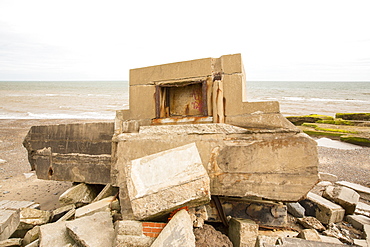
The Remains of the Godwin battery on the beach at Kilnsea at the head of Spurn point on Yorkshires East Coast, UK. Initially constructed during the First World War, the Godwin Battery was added to during the Second World War. It comprised of gun emplacements, search light, barracks, officers’ mess, and a hospital. This section of coastline is the fastest eroding coastline in Europe. The soft boulder clay cliffs are easily eroded and have been eroding since Roman Times, but recently the climate change impacts of increased stormy weather, increased heavy rainfall events and sea level rise have accelerated the rate of erosion. The average rate of attrition is 1.5metres per year, last year it was 5 metres.
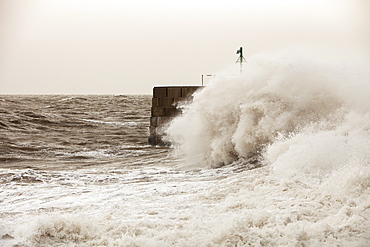
Gale force winds and crashing waves battering the coastal defences in Harrington, Workington, Cumbria, England, United Kingdom, Europe
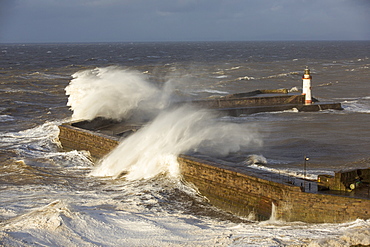
Storm waves from an extreme low pressure system batter Whitehaven harbour, Cumbria, UK, on the 10th December 2014.
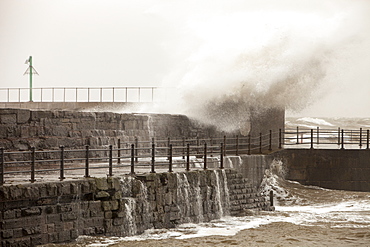
Gale force winds and crashing waves battering the coastal defences in Harrington, Workington, Cumbria, England, United Kingdom, Europe
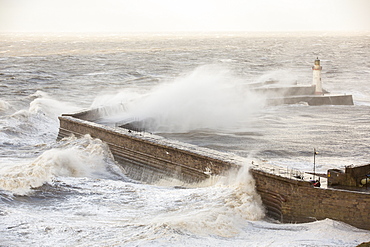
Storm waves from an extreme low pressure system batter Whitehaven harbour, Cumbria, UK, on the 10th December 2014.
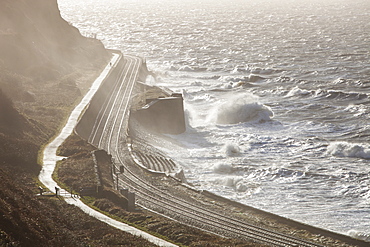
The West Coast railway line during a storm near Workington in Cumbria, England, United Kingdom, Europe
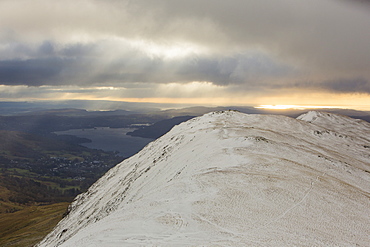
Looking through to Heysham nuclear power station on Morecambe Bay from Fairfield, in stormy conditions, Lake District, Cumbria, England, United Kingdom, Europe
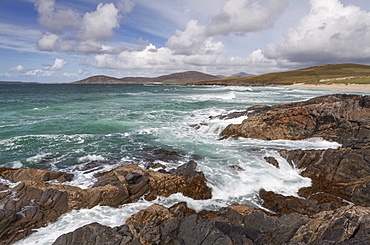
Stormy conditions at Traigh Iar on the Isle of Harris, Outer Hebrides, Scotland, United Kingdom, Europe
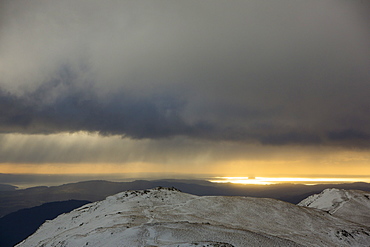
Looking through to Heysham nuclear power station on Morecambe Bay from Fairfield, in stormy conditions, Lake District, Cumbria, England, United Kingdom, Europe
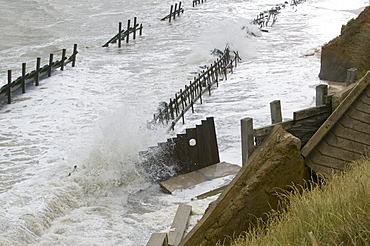
The lifeboat launching ramp destroyed as waves crashing against the coast at Happisburgh on the fastest eroding section of the UK coast, Norfolk, England, United Kingdom, Europe
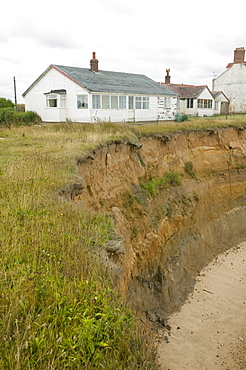
Happisburgh on the fastest eroding section of the UK coast, Norfolk, England, United Kingdom, Europe

